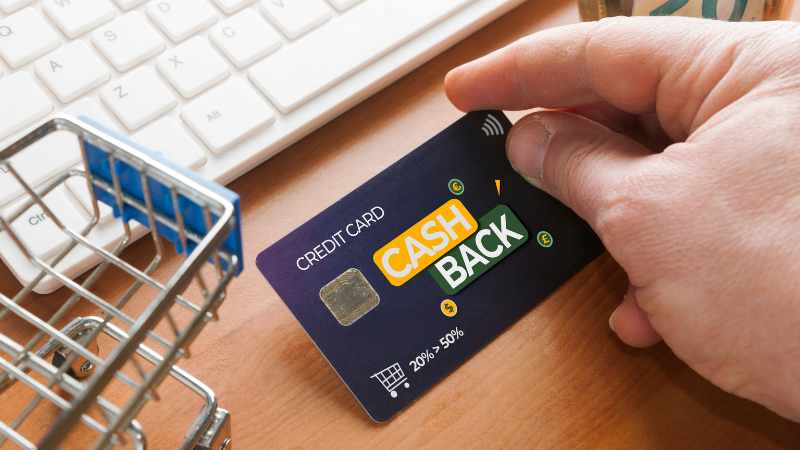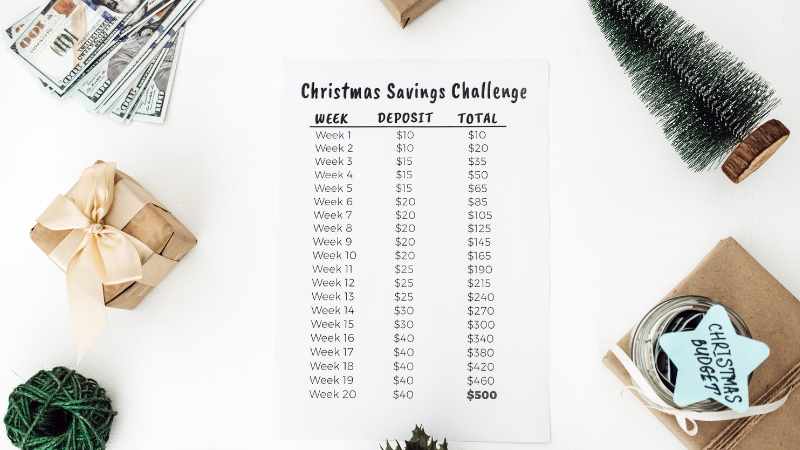If you’ve ever found yourself wondering where all your hard-earned money goes each month, you’re not alone. Whether you’re saving up for that dream vacation, a down payment on a home, or just want a little extra cushion in your bank account, the journey to saving money can feel like a daunting task.
As I’ve been working on my financial freedom plan, saving has been a crucial part of it. Over the past few years, I have gathered a few tips to save money fast that I want to share in this article. So, keep reading for 40 practical and easy-to-implement tips that will help you stash away those dollars.
Table of Contents
Organizing your Finances

1. Create a Realistic Budget
Creating a solid budget will be your roadmap to success. Get a clear picture of where your money is coming from and where it’s going. Analyze your expenses and pinpoint non-essential items.
2. Build an Emergency Fund
Prioritizing the establishment of an emergency fund is crucial for a stable financial foundation. Allocate a portion of your income specifically for unforeseen circumstances and aim for an amount that covers three to six months’ worth of essential living expenses.
3. Automate Savings
Set up automated transfers to your savings account to streamline the process and make sure you are allocating a minimum amount towards savings each month.
Banking and Credit

4. Switch to a High-Interest Savings Account
Research different banks and financial institutions for higher interest rates. Online banks often offer competitive rates compared to traditional brick-and-mortar institutions. Personally, I use both Wealthfront that offers a 5% APY and Apple Savings account that offers a 4.25% APY.
5. Use credit cards with cash back rewards
Choose credit cards that offer cash back rewards on everyday purchases. Take advantage of rotating bonus categories that offer higher cash back percentages and align your spending with these categories to maximize your rewards.
Declutter Your Life

6. Cancel Unused Subscriptions
Assess your monthly subscriptions and identify those you no longer use or need, you will be surprised. Maybe you signed up to the free trial for a streaming service but forgot to cancel? Or are you still subscribed to a wine delivery service when you don’t even drink that much wine (this was me)?
7. Optimize Your Wardrobe
This does not necessarily mean you need to get rid of all your clothes and build a capsule wardrobe. In my case, a capsule wardrobe does not work for my lifestyle, so I opt for just a curated wardrobe. So what does it mean to have a curated wardrobe? A curated wardrobe is about keeping clothes that you like, that fit your lifestyle and that you will actually wear on a regular basis but it doesn’t limit you to a certain number of pieces.
8. Sell Unwanted Items
You can make additional money to send into your savings account by selling unwanted items. Take stock of items around your home that are in good condition but no longer serve a purpose. This can include clothes but also electronics, home decor and more. Use platforms like Poshmark and Ebay to turn your clutter into cash.
9. Practice the One In, One Out Rule
Adopt the “One In, One Out” rule for possessions. Before acquiring a new item, consider parting with something you already own to maintain balance. This rule encourages mindful consumption and prevents the accumulation of unnecessary belongings.
Smart Shopping

10. Wait for sales to buy big-ticket items
Make a wish list and time your purchases during seasonal sales, holidays, and promotional events. Patience can pay off with substantial savings on big-ticket items.
11. Look for discounts and use coupons
Before making any online or in-store purchase, search for applicable coupons or promo codes. Numerous websites and browser extensions like Honey can help you find the best deals.
12. Buy non-perishables in bulk
Consider buying non-perishable items in bulk to reduce the cost per unit. If you live alone, consider buying in bulk with a roommate or friend and split the goods.
13. Buy Generic Brands
Explore generic or store-brand alternatives for everyday products. Often, generic brands are just as good as name brands but cost less.
14. Shop with a Grocery List
Before heading to the grocery store, plan your meals for the week and create a shopping list. Also, try to go to the grocery store on a full stomach, so that it is easier to stick to your shopping list
15. Mindful Shopping
Before buying, assess the necessity and long-term value of the item. Avoid impulse purchases by taking a moment to consider the impact on your budget. If you really want to buy a non-essential item, create a wish list. At the end of the week or of the month, you can come back to your list and see if you still want that item.
16. Remove Shopping Apps from Your Phone
Remove shopping apps from your phone to reduce the temptation to make impulse purchases. Accessing online stores from a computer may provide a more intentional shopping experience.
17. Buy Secondhand
Consider buying secondhand items for substantial savings. Thrift stores and online marketplaces are excellent sources for quality used goods. I have loved all my second hand purchases from Poshmark and Thredup. Sometimes, you can even find new with tag items.
Lifestyle Changes

18. Buy Whole Foods
Opt for whole, unprocessed foods when grocery shopping These choices are not only healthier but often more cost-effective than pre-packaged alternatives.
19. Cook at Home
Embrace the art of cooking at home. You will save money and also have more control over the ingredients for healthier meals.
20. Use a Bike or Walk for Short-Distance Trips
Whenever feasible, use a bike or walk for short-distance errands. You will save money on gas or transportation and also have a more active lifestyle.
21. Explore Free Entertainment Options
Seek out free entertainment options in your community and discover budget-friendly fun. Go to a park, local fair or free music festival, you will be surprised at how many experiences you can have without breaking the bank.
22. Brew Coffee at Home
Learn to brew your coffee at home instead of frequenting coffee shops. My Starbucks spending has considerably dropped since I got an espresso machine. Although, these coffee machines can be expensive, they can actually save you money on the long run, and making your own coffee can also be fun
23. Carpool
Explore carpooling options with friends, neighbors, or colleagues. Sharing rides not only reduces transportation costs but also contributes to a greener environment.
24. Always Carry Snacks
Carry snacks when you go to the office or when you are running errands. If you get hungry during the day, you can have the snack of your choice instead of buying something from a cafe or vending machine that will probably be more expensive and not as healthy.
Saving on Utilities

25. Upgrade to a Smart Thermostat
Upgrade to a smart thermostat for precise control over your AC system. Program it to adjust temperatures based on your schedule, so you can save energy when you’re away. Smart thermostats can learn your preferences over time, maximizing efficiency.
26. Optimize Appliance Usage
Invest in energy-efficient appliances with high ENERGY STAR ratings. They consume less energy and may qualify for rebates, contributing to long-term savings. Another simple thing that you can do to save a few bucks is to unplug chargers, TVs, and other electronics when not in use to prevent phantom energy consumption.
Save When You Travel

27. Travel During Off-Peak Seasons
Plan your trips during off-peak seasons to take advantage of lower airfare and accommodation rates.
28. Use Price Comparison Websites
Leverage price comparison websites such as Kayak or Booking to find the best deals on flights, hotels, and rental cars. Explore multiple platforms to ensure you’re getting the most competitive prices.
29. Travel During Weekdays
If you can make it work with your vacation days schedule, consider traveling during weekdays instead of weekends. Flights and accommodations are often more affordable, and attractions may be less crowded.
30. Pack Efficiently to Avoid Extra Baggage Fees
Pack only the essentials and weigh your bag before going to the airport to avoid fees. If your trip is on the shorter side, you can try to fit everything in a carry-on to not even pay for a checked bag. Find your travel capsule wardrobe that can fit in a carry-on.
31. Eat Like a Local
Save on dining expenses by exploring local markets and eateries. Eating like a local not only provides a more authentic experience but can also be more budget-friendly than tourist hotspots.
32. Plan Free or Low-Cost Activities
Look for free or low-cost activities at your destination. Many cities offer museums, parks, and cultural experiences that won’t dent your travel budget.
33. Take Advantage of Travel Rewards
Join travel rewards programs for airlines and hotels. Accumulate points through loyalty programs to offset the cost of future travel.
Learn to DIY and Save

34. DIY Home Maintenance
Equip yourself with basic home maintenance skills.Learn to fix leaky faucets, repair minor electrical issues, and handle simple plumbing tasks.
35. DIY Pet Grooming
Pet grooming can be expensive. Groom your pets at home instead of relying on professional services to save some money. You could at least give your pet baths and trim their nails at home. For dogs, like mine, that hate getting their nails trimmed, this tool works wonders.
36. Learn Basic Sewing Skills
Acquire fundamental sewing skills to mend clothing and make simple alterations. Of course, if you need to get the shoulders altered that probably requires a professional. But if you just need to get your pants hemmed, you can do it yourself with some basic sewing skills.
37. DIY Nail Salon
Skip the salon and learn to do your nails at home. I don’t know about you, but in my area a manicure can cost $50. As I need to get my nails done every week I don’t want to spend $200 a month on my nails, I do them myself. Invest in quality nail care products and nail polish colors that you love and have fun in the process.
Saving Challenges

38. No-Spend January
Challenge yourself to a “No-Spend January” and embrace frugality for a month. You can set your own rules for the challenges, but the idea is to limit discretionary spending for the entire month, focusing only on essential purchases.
39. Savings Challenge
Create a savings challenge tailored to your financial goals. Establish specific, measurable targets each month, gradually increasing the amount as you build momentum. I have this free 6-month savings challenge template that you may like.
40. Reverse 52-Week Savings Challenge
Try the Reverse 52-Week Savings Challenge. Instead of starting with a small amount and gradually saving more each week, flip it. Begin by saving a larger amount in the first week and decrease the amount each subsequent week. This way, you save more money earlier in the year when it might be easier.
